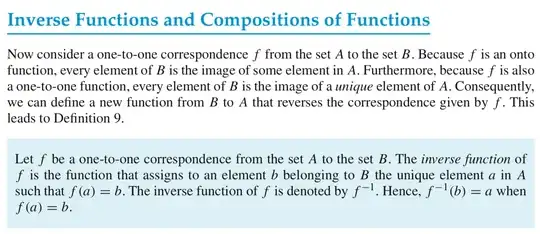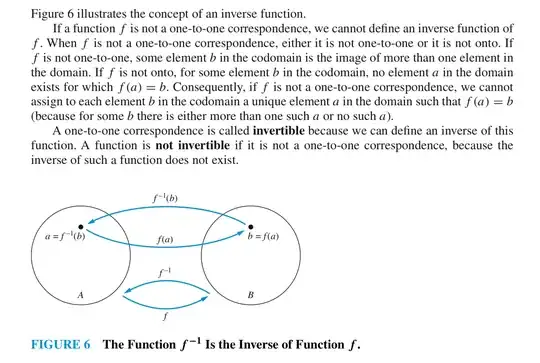My discrete mathematics book says:
But I read an answer, https://math.stackexchange.com/a/2415543/390226, said:
["...]There are invertible functions which are not bijective,[..."]
And to the same question in the link, an answer said:
["]A function is invertible if and only if it is injective[."]
So for a function to have a inverse, it must be bijective. But any function that is injective is invertible, as long as such inverse defined on a subset of the codomain of original one, i.e. the image of the original function?

